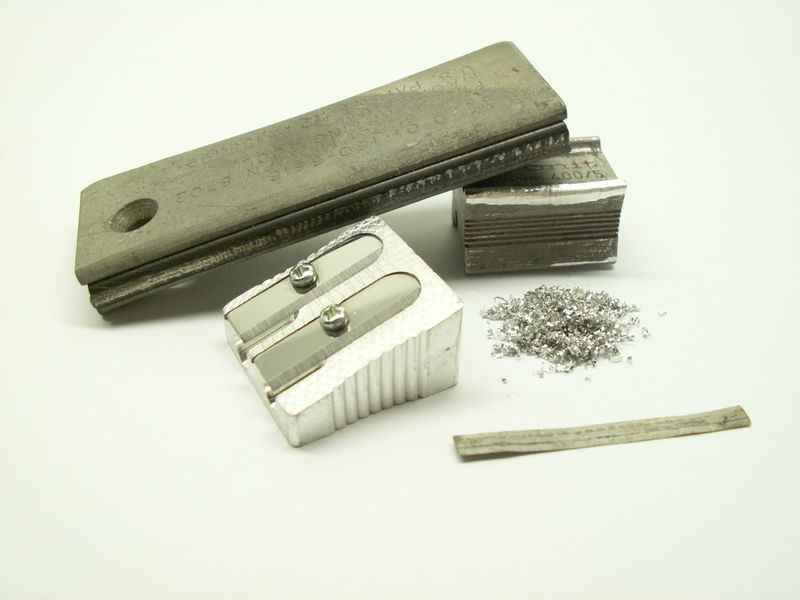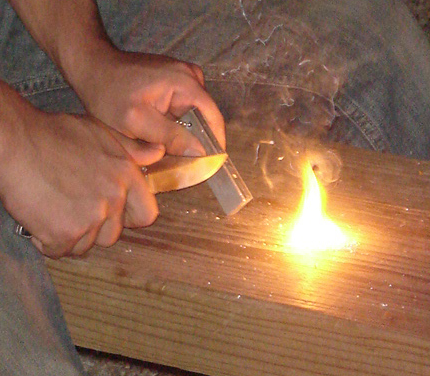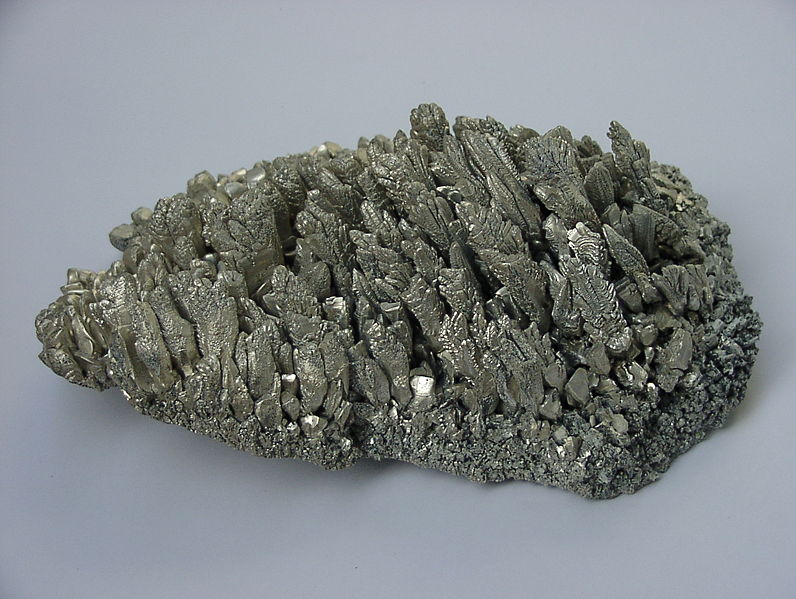Magnesium
|
WikiDoc Resources for Magnesium |
|
Articles |
|---|
|
Most recent articles on Magnesium |
|
Media |
|
Evidence Based Medicine |
|
Clinical Trials |
|
Ongoing Trials on Magnesium at Clinical Trials.gov Clinical Trials on Magnesium at Google
|
|
Guidelines / Policies / Govt |
|
US National Guidelines Clearinghouse on Magnesium
|
|
Books |
|
News |
|
Commentary |
|
Definitions |
|
Patient Resources / Community |
|
Patient resources on Magnesium Discussion groups on Magnesium Directions to Hospitals Treating Magnesium Risk calculators and risk factors for Magnesium
|
|
Healthcare Provider Resources |
|
Causes & Risk Factors for Magnesium |
|
Continuing Medical Education (CME) |
|
International |
|
|
|
Business |
|
Experimental / Informatics |
Editor-In-Chief: C. Michael Gibson, M.S., M.D. [1]
Overview
Magnesium (Template:PronEng) is a chemical element with the symbol Mg, the atomic number 12, and an atomic mass of 24.31. Magnesium is the ninth most abundant element in the universe by mass. It constitutes about 2% of the Earth's crust by mass,[1] and it is the third most abundant element dissolved in seawater. Magnesium ions are essential to all living cells, and is the 11th most abundant element by mass in the human body. The free element (metal) is not found in nature. Once produced from magnesium salts, this alkaline earth metal is used as an alloying agent to make aluminium-magnesium alloys, sometimes called "magnalium" or "magnelium".
Notable characteristics
Elemental magnesium is a fairly strong, silvery-white, light-weight metal (two thirds the density of aluminium). It tarnishes slightly when exposed to air, although unlike the alkaline metals, storage in an oxygen free environment is unnecessary because magnesium is protected by a thin layer of oxide which is fairly impermeable and hard to remove. Like its lower periodic table group neighbor calcium, magnesium reacts with water at room temperature, though it reacts much more slowly than calcium. When it is submerged in water, hydrogen bubbles will almost unnoticeably begin to form on the surface of the metal, though if powdered it will react much more rapidly. Magnesium also reacts with hydrochloric acid (HCl) and produces heat and hydrogen when added to it. The magnesium will begin to bubble and become hot – too hot to touch comfortably. The reaction will occur faster with higher temperatures (see precautions).
Magnesium is a highly flammable metal, but while it is easy to ignite when powdered or shaved into thin strips, it is difficult to ignite in mass or bulk. Once ignited it is difficult to extinguish, being able to burn in both nitrogen (forming magnesium nitride), and carbon dioxide (forming magnesium oxide and carbon). When it burns in air, Magnesium produces a brilliant white light. Thus magnesium powder (flash powder) was used as a source of illumination in the early days of photography. Later, magnesium ribbon was used in electrically ignited flash bulbs. Magnesium powder is used in the manufacture of fireworks and marine flares where a brilliant white light is required.
Magnesium compounds are typically white crystals. Most are soluble in water, providing the sour-tasting magnesium ion Mg2+. Small amounts of dissolved magnesium ion contributes to the tartness and taste of natural waters. Magnesium ion in large amounts is an ionic laxative, and magnesium sulfate (Epsom salts) is sometimes used for this purpose. So-called "milk of magnesia" is a water suspension of one of the few insoluble magnesium compounds: magnesium hydroxide. The undissolved particles give rise to its appearance and name. Milk of magnesia is a mild base and is commonly used as an antacid.
Applications
As the metal
Magnesium is the third most commonly used structural metal, following steel and aluminium.
Magnesium compounds, primarily magnesium oxide, are used mainly as refractory material in furnace linings for producing iron, steel, nonferrous metals, glass and cement. Magnesium oxide and other compounds also are used in agricultural, chemical and construction industries. As a metal, this element's principal use is as an alloying additive to aluminium with these aluminium-magnesium alloys being used mainly for beverage cans.
Magnesium, in its purest form, can be compared with aluminium, and is strong and light, so it is used in several high volume part manufacturing applications, including automotive and truck components. Specialty, high-grade car wheels of magnesium alloy are called "mag wheels". In 1957 a Corvette SS, designed for racing, was constructed with magnesium body panels. Porsche's all-out quest to decrease the weight of their racecars led to the use of magnesium frames in the famous 917/053 which won Le Mans in 1971, and still holds the absolute distance record. The 917/30 Can-Am car also featured a magnesium spaceframe, helping it to make the most of its prodigious 1100-1500hp. Volkswagen has used magnesium in its engine components for many years. For a long time, Porsche used magnesium alloy for its engine blocks due to the weight advantage. There is renewed interest in magnesium engine blocks, as featured in the 2006 BMW 325i and 330i models. The BMW engine uses an aluminium alloy insert for the cylinder walls and cooling jackets surrounded by a high temperature magnesium alloy AJ62A. The application of magnesium AE44 alloy in the 2006 Corvette Z06 engine cradle has advanced the technology of designing robust automotive parts in magnesium. Both of these alloys are recent developments in high temperature low creep magnesium alloys. The general strategy for such alloys is to form intermetallic precipitates at the grain boundaries, for example by adding mischmetal or calcium.[2] New alloy development and lower costs, which are becoming competitive to aluminium, will further the number of automotive applications.

The second application field of magnesium is electronic devices. Due to low weight, good mechanical and electrical properties, magnesium is widely used for manufacturing of mobile phones, laptop computers, cameras, and other electronic components. Magnesium is even used to make some higher end yo-yos, such as the Duncan Freehand Mg.
Historically, magnesium was one of the main aerospace construction metals and was used for German military aircraft as early as World War I and extensively for German aircraft in World War II. The Germans coined the name 'Elektron' for magnesium alloy which is still used today. Due to perceived hazards with magnesium parts in the event of fire, the application of magnesium in the commercial aerospace industry was generally restricted to engine related components. Currently the use of magnesium alloys in aerospace is increasing, mostly driven by the increasing importance of fuel economy and the need to reduce weight. The development and testing of new magnesium alloys notably Elektron 21 which has successfully undergone extensive aerospace testing for suitability in both engine, internal and airframe components. European Community runs three R&D magnesium projects in Aerospace priority of Six Framework Program.

- Incendiary use: Magnesium is flammable, burning at a temperature of approximately 2500 K (2200 °C, 4000 °F), and the autoignition temperature of magnesium is approximately 744 K (473 °C, 883 °F) in air. The extremely high temperature at which magnesium burns makes it a handy tool for starting emergency fires during outdoor recreation. Other related uses include flashlight photography, flares, pyrotechnics, fireworks sparklers, and incendiary bombs.
Other uses include:
- Removal of sulfur from iron and steel.
- Production of titanium
- Photoengraved plates in the printing industry.
- Combined in alloys, this metal is essential for airplane and missile construction.
- When used as an alloying agent, this metal improves the mechanical, fabrication and welding characteristics of aluminium.
- Additive agent for conventional propellants and used in producing nodular graphite in cast iron.
- Reducing agent for the production of pure uranium and other metals from their salts.
- Magnesium turnings or ribbon are used to prepare Grignard reagents, which are useful in organic synthesis
- Easily reacting with water, it can serve as a desiccant
In magnesium compounds
- The magnesium ion is necessary for all life (see magnesium in biological systems), so magnesium salts are an additive for foods, fertilizers (Mg is a component of chlorophyll), and culture media.
- Magnesium hydroxide is used in milk of magnesia, its chloride, oxide, gluconate and citrate used as oral magnesium supplements, and its sulfate (Epsom salts) for various purposes in medicine, and elsewhere (see the article for more). Oral magnesium supplements have been claimed to be therapeutic for some individuals who suffer from Restless Leg Syndrome (RLS).
- Magnesium borate, magnesium salicylate and magnesium sulfate are used as antiseptics.
- Magnesium bromide is used as a mild sedative (this action is due to the bromide, not the magnesium).
- Dead-burned magnesite is used for refractory purposes such as brick and liners in furnaces and converters.
- Magnesium carbonate (MgCO3) powder is also used by athletes, such as gymnasts and weightlifters, to improve the grip on objects – the apparatus or lifting bar.
- Magnesium stearate is a slightly flammable white powder with lubricative properties. In pharmaceutical technology it is used in the manufacturing of tablets, to prevent the tablets from sticking to the equipment during the tablet compression process (i.e., when the tablet's substance is pressed into tablet form).
- Magnesium sulfite is used in the manufacture of paper (sulfite process).
- Magnesium phosphate is used to fireproof wood for construction.
- Magnesium hexafluorosilicate is used in mothproofing of textiles.
History
The name originates from the Greek word for a district in Thessaly called Magnesia. It is related to magnetite and manganese, which also originated from this area, and required differentiation as separate substances. See manganese for this history.
Magnesium is the seventh most abundant element in the earth's crust by mass and eighth by molarity.[1] It is found in large deposits of magnesite, dolomite, and other minerals, and in mineral waters, where magnesium ion is soluble. In 1618 a farmer at Epsom in England attempted to give his cows water from a well. They refused to drink because of the water's bitter taste. However the farmer noticed that the water seemed to heal scratches and rashes. The fame of Epsom salts spread. Eventually they were recognized to be hydrated magnesium sulfate, MgSO4.
In England, Sir Humphry Davy electrolytically isolated pure magnesium metal in 1808 from a mix of magnesia and HgO, and A. A. B. Bussy prepared it in coherent form in 1831. Davy's first suggestion for a name was magnium, but the name magnesium is now used.
Sources
Although magnesium is found in over 60 minerals, only dolomite, magnesite, brucite, carnallite, talc, and olivine are of commercial importance.
In the United States this metal is principally obtained by electrolysis of fused magnesium chloride from brines, wells, and sea water:

The United States has traditionally been the major world supplier of this metal, supplying 45% of world production even as recently as 1995. Today, the US market share is at 7%, with a single domestic producer left, US Magnesium, a company born from now-defunct Magcorp.[3] As of 2005 China has taken over as the dominant supplier, pegged at 60% world market share, which increased from 4% in 1995. Unlike the above described electrolytic process, China is almost completely reliant on a different method of obtaining the metal from its ores, the silicothermic Pidgeon process (the reduction of the oxide at high temperatures with silicon).
Magnesium from sea water
The Mg2+ cation is the second most abundant cation in seawater (occurring at about 12% of the mass of sodium there), which makes seawater and sea-salt an attractive commercial source of Mg. To extract the magnesium, calcium carbonate is added to sea water to form magnesium carbonate precipitate.
MgCl2 + CaCO3 → MgCO3 + CaCl2
Magnesium carbonate is insoluble in water so it can be filtered out, and reacted with hydrochloric acid to obtain concentrated magnesium chloride.
MgCO3 + 2HCl → MgCl2 + CO2 + H2O
From magnesium chloride, electrolysis produces magnesium.
Biology
Magnesium ions are essential to the basic nucleic acid chemistry of life, and thus are essential to all cells of all known living organisms. Plants have an additional use for magnesium in that chlorophylls are magnesium-centered porphyrins. Many enzymes require the presence of magnesium ions for their catalytic action, especially enzymes utilizing ATP, or those which use other nucleotides to synthesize DNA and RNA. Magnesium deficiency in plants causes late-season yellowing between leaf veins, especially in older leaves, and can be corrected by applying epsom salts (which is rapidly leached), or else crushed dolomitic limestone to the soil.

Magnesium is a vital component of a healthy human diet and deficiency has been implicated in a number of human diseases. Magnesium is readily available in many common foods but studies indicate that many Americans are magnesium deficient. Excess magnesium in the blood is freely filtered at the kidneys, and for this reason it is very difficult to overdose on magnesium from dietary sources alone.[4] However, there are a number of magnesium supplements available which make overdose possible, particularly in people with poor renal function, but severe hypermagnesemia can also occur without renal dysfunction.[5]
Isotopes
Magnesium has three stable isotopes: 24Mg, 25Mg, 26Mg. All are present in significant amounts (see table of isotopes above). About 79% of Mg is 24Mg. The isotope 28Mg is radioactive and in the 1950s to 1970s was made commercially by several nuclear power plants for use in scientific experiments. This isotope has a relatively short half-life (21 hours) and so its use was limited by shipping times.
26Mg has found application in isotopic geology, similar to that of aluminium. 26Mg is a radiogenic daughter product of 26Al, which has a half-life of 717,000 years. Large enrichments of stable 26Mg have been observed in the Ca-Al-rich inclusions of some carbonaceous chondrite meteorites. The anomalous abundance of 26Mg is attributed to the decay of its parent 26Al in the inclusions. Therefore, the meteorite must have formed in the solar nebula before the 26Al had decayed. Hence, these fragments are among the oldest objects in the solar system and have preserved information about its early history.
It is conventional to plot 26Mg/24Mg against an Al/Mg ratio. In an isochron dating plot, the Al/Mg ratio plotted is27Al/24Mg. The slope of the isochron has no age significance, but indicates the initial 26Al/27Al ratio in the sample at the time when the systems were separated from a common reservoir.
Precautions
Magnesium metal and alloys are highly flammable in their pure form when molten, as a powder, or in ribbon form. Burning or molten magnesium metal reacts violently with water. Magnesium powder is an explosive hazard. One should wear safety glasses while working with magnesium, and if burning it, these should include a heavy U.V. filter, similar to welding eye protection. The bright white light (including ultraviolet) produced by burning magnesium can permanently damage the retinas of the eyes, similar to welding arc burns.[6]
Water should not be used to extinguish magnesium fires, because it can produce hydrogen which will feed the fire, according to the reaction:[7]
- Mg (s) + 2 H2O (g) → Mg(OH)2 (s) + H2 (g)
- or in words:
- Magnesium (solid) + steam → Magnesium hydroxide (solid) + Hydrogen (gas)
Carbon dioxide fire extinguishers should not be used either, because magnesium can burn in carbon dioxide (forming magnesium oxide, MgO, and carbon).[8] A Class D dry chemical fire extinguisher should be used if available, or else the fire should be covered with sand or magnesium foundry flux. An easy way to put out small metal fires is to place a polyethylene bag filled with dry sand on top of the fire. The heat of the fire will melt the bag and the sand will flow out onto the fire.
See also
References
- ↑ 1.0 1.1 Template:Cite paper
- ↑ Template:Cite paper
- ↑ Vardi, Nathan (February 22 2007). "Man With Many Enemies". Forbes.com. Retrieved 2006-06-26. Check date values in:
|date=(help) - ↑ Magnesium
- ↑ Kontani M, Hara A, Ohta S, Ikeda T (2005). "Hypermagnesemia induced by massive cathartic ingestion in an elderly woman without pre-existing renal dysfunction". Intern. Med. 44 (5): 448–52. doi:10.2169/internalmedicine.44.448. PMID 15942092.
- ↑ "Science Safety: Chapter 8". Government of Manitoba. Retrieved 2007-08-21.
- ↑ "Chemistry : Periodic Table : magnesium : chemical reaction data". webelements.com. Retrieved 2006-06-26.
- ↑ "Demo Lab: Reaction Of Magnesium Metal With Carbon Dioxide". Retrieved 2006-06-26.
Template:Compact periodic table
af:Magnesium ar:مغنيزيوم ast:Magnesiu az:Maqnezium be:Магній bg:Магнезий bn:ম্যাগনেসিয়াম bs:Magnezijum ca:Magnesi ceb:Magnesium co:Magnesiu cs:Hořčík cy:Magnesiwm da:Magnesium de:Magnesium dv:މެގްނީޒިއަމް el:Μαγνήσιο eo:Magnezio et:Magneesium eu:Magnesio fa:منیزیم fi:Magnesium fur:Magnesi gl:Magnesio gv:Magnaishum he:מגנזיום hi:मेगनीसियम hr:Magnezij ht:Manyezyòm hu:Magnézium hy:Մագնիում id:Magnesium io:Magnezio is:Magnesín it:Magnesio jbo:lidgusyjinme jv:Magnesium ka:მაგნიუმი kn:ಮ್ಯಗ್ನೀಶಿಯಮ್ ko:마그네슘 ku:Magnezyûm la:Magnesium lb:Magnesium lt:Magnis lv:Magnijs mi:Konupora mk:Магнезиум ml:മഗ്നീഷ്യം ms:Magnesium nds:Magnesium nl:Magnesium nn:Magnesium no:Magnesium oc:Magnèsi qu:Qunta q'illay scn:Magnesiu sh:Magnezij simple:Magnesium sk:Horčík sl:Magnezij sq:Magneziumi sr:Магнезијум sv:Magnesium sw:Magnesi ta:மக்னீசியம் tg:Магний th:แมกนีเซียม uk:Магній uz:Magniy zh-yue:鎂 Template:WikiDoc Sources